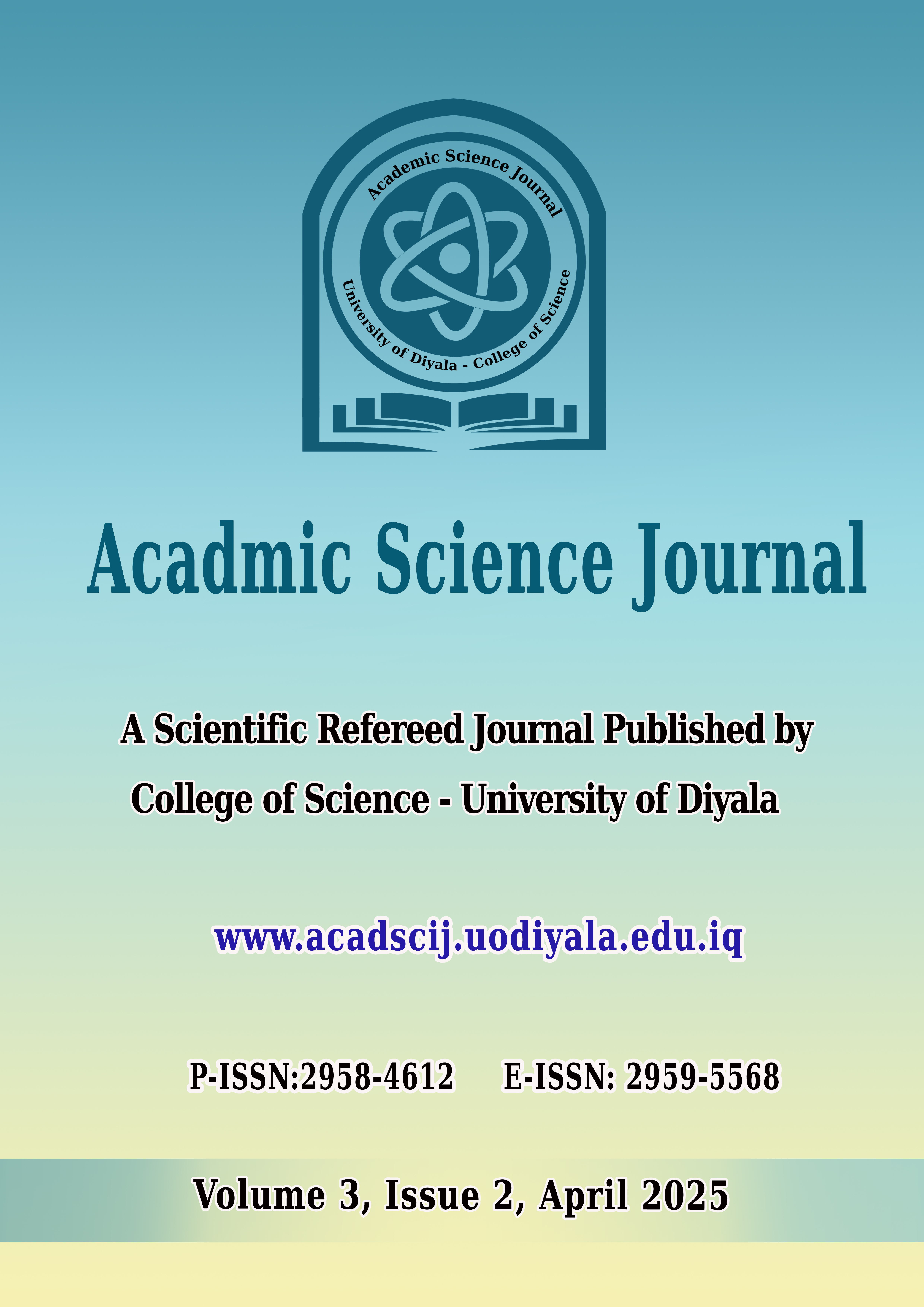Microfacies Analysis and Diagenesis Processes of Yamama Formation in Selected Wells of Fihaa Oilfield, Southern Iraq
DOI:
https://doi.org/10.24237/ASJ.03.02.864BAbstract
This study focused on explained the carbonate microfacies of Yamama Formation and the impact of diagenesis processes in selected wells of Fiahaa oilfield in south of Iraq. The study showed distinctive microfacies that indicate different paleoenviroments. The inner ramp environment is subdivided into shoal, open marine and restricted environments. The shoal environment microfacies include peloid packstone, bioclastic peloidal packstone and benthic foraminiferal peloidal packstone. Restricted marine environment microfacies include grainstone, mudstone, peloidal wackestone -packstone, packstone and lithoclast packstone. Open marine environment microfacies include the foraminiferal packstone and wackestone, bioclastic packstone and coral boundstone. Lagoon marine environment microfacies include bioclastic packstone and algae wackestone. Mid-ramp environment microfacies include foraminiferal peloidal packstone, bioclast packstone, bioclastic foraminiferal wackestone. Outer ramp environment is distinguished by foraminiferal peloid packstone, bioclastic packstone, peloid bioclastic packstone and peloidal bioclastic wackestone. In the current study Yamama Formation affected by diagenetic processes which are classified into two major types: destructive diagenesis processes; such as compaction, chemical dissolution and Micrtization, and constructive diagenesis processes include cementation (Blocky, Drusy, Syntaxial rim), Dolomitization, Fractures.
Downloads
References
-R. W. Powers, L. E, Ramirez, C. D. Redmond, and E. L., Elberg, 1967. Sedimentary geology ofSaudi Arabia. In: The geology of the Arabian Peninsula. USGS Prof. Paper No. 560-D., 177p,Washington.
-F.N. Sadooni, 1993. Stratigraphic Sequence, Microfacies, and Petroleum Prospects of theYamama Formation, Lower Cretaceous, Southern Iraq. American Association of PetroleumGeologists Bulletin, v. 77, p. 1971-1988.
-R.J. Dunham, 1962, Classification of carbonate according to depositional texture, in Ham, W.E.(ed.), Classification of carbonate rocks. AAPG Memoir 1, p.108-121.
-A. F. Douban, and F., Medhadi , 1999. Sequence chronostratigraphy and petroleum systems ofthe Cretaceous Megasequences, Kuwait. Aapg Inernational Confcrence and Exhibition , p. 152 -155.
-R. C. Van Bellen, H. V. Dunnington, R. Wetzel, and D. Morton, “Lexique StratigraphiqueInternal Asie. Iraq”. Intern. Geol. Conger. Comm. Stratigr, 3, Fasc. 10a, 333p., 1959.
-E. Flügel, 2004 Microfacies of Carbonate Rocks. Analysis, Interpretation and Application.Springer Berlin Heidelberg New York.976 p.
-J. l., Wilson, 1975. Carbonate facies in the geological history. Springer-Verlag, New York, P.139,471.
-E., Flugel, 2010. Microfaciesof Carbonate Rocks, 2nd ed., Springer-Verlag, Berlin, 984 pp.
-Tuker, V .M. E., and Wright P., Carbonate sedimentology, Oxford, Blackwell scientificpublications, 482p.38, 1990.
- Al-Sadooni, F. N. (2004), Stratigraphy, depositional setting and reservoir characteristics of Tuornian- Campanian carbonates in central Iraq, Journal of Petroleum Geology, 27(4), 357-371.
-Al-Hassani, M. and Al-Dulaimi, S. (2021) ‘Biostratigraphy ofYamama Formation in Faihaa Oil Field, Southern Iraq’, IraqiJournal of Science, 62(5), pp. 1570–1586.doi:10.24996/ijs.2021.62.5.20.
-Al-Siddiki, A.A., 1977. Subsurface geology of southern Iraq . 10the Arab Petrol. Conger. Tripoli. Libya, P. 47.Brun, L., 1970,Cretaceous Microfossils and Microfacies from Iraq. ELF-R.E.-internal report.
-Choquette P.W. and Pray L.C., 1970. Geologic nomenclature andclassification of porosity in sedimentary carbonates. AmericanAssociation of Petroleum Geologists Bulletin, 54, 2, PP.207-250.
-Dunnington, H. V. (1959). Mesozoic (cretaceous). LexiqueStratigraphique International, Asie, Iraq: 10a. Centre National deLa Recherche Scientifique, Paris.
-Flugel, E. (1982) ‘Microfacies analysis of limestones’, Springer,p. 633.
-Longman M. W., 1980. Carbonate diagenetic textures fromnearsurface diagenetic environments. Am. Assoc. Petrol. Geol.Bull., 64:pp.461-487.
-Moore, C. H., 2004. Carbonate reservoirs, porosity evaluation anddiagenesis in a sequence stratigrphic framework, Developments insedimentology55.
-Scholle, P. A., and Ulmer-Scholle, D. S., 2003. A Color Guide tothe Petrography of Carbonate Rocks: Grains, textures, porosity,diagenesis, AAPGMemoir 77, Published by The AmericanAssociation of Petroleum Geologists,Tulsa, Oklahoma, USA,459pp.
-Selley, R. C., 2000. Elements of Petroleum Geology. 2nd Edition.AP. Academic Press "An Imprint of Elsevier", USA, 470pp.
-Boggs, (2009), Petrology of Sedimentary rocks. 2ⁿᵈ Edition, Cambridge University Press, New York, P:332, 345, 531, 536, 612pp.
-Powers, R., Ramirez, L., Redmond, C. and Elberg, E. (1966) Geology of the Arabian Peninsula. Geological Survey Professional Paper, 560.
-Tucker, M.E., (2001), Sedimentary Petrology: An Introduction to the Original Sedimentary rocks, 3ʳᵈ Edition, Vol.2, Blackwell, Scientific Publication, London, P:145,111,117,121-128,134, 260 pp.
-Sadooni, F.N. 1993b. Stratigraphic Sequence, Microfacies, and Petroleum Prospects of the Yamama Formation, Lower Cretaceous, Southern Iraq. American Association of Petroleum Geologists Bulletin, v. 77, p. 1971-1988.
-Bathurst, R. G. C., 1983. Neomorphic spar versus cement in someJurassic grainstones: Significance for evaluation of porosityevolution and compaction. J.Geol. Soc.V. 14, pp.229-237.
-Walker, R.G., 1992. Facies models and modern stratigraphic concepts. Facies models response to sea-level change, pp.1-14.
-Adams,A.E.&Mackenzie, W.S.,(1998), Carbonate sediments and rocks under the microscope.London: (Manson Publishing),Oxford University Press,P:101,104; 180pp.
-Choquette, P.W.,and James, N.P., 1987. Diagenesis, 12, Diagenesis in limestones, 3, The deep burial environment. –Geoscience Canada, 14, p 3-35.
- Dickson, J. A. D., and Saller, A. H. 1995. Identification of subaerial exposure surfaces and porosity preservation in Pennsylvanian and Lower Permian shelf limestones, eastern Central Basin platform, Texas. pp. 239-257.
Downloads
Published
Issue
Section
License
Copyright (c) 2025 CC BY 4.0

This work is licensed under a Creative Commons Attribution 4.0 International License.





